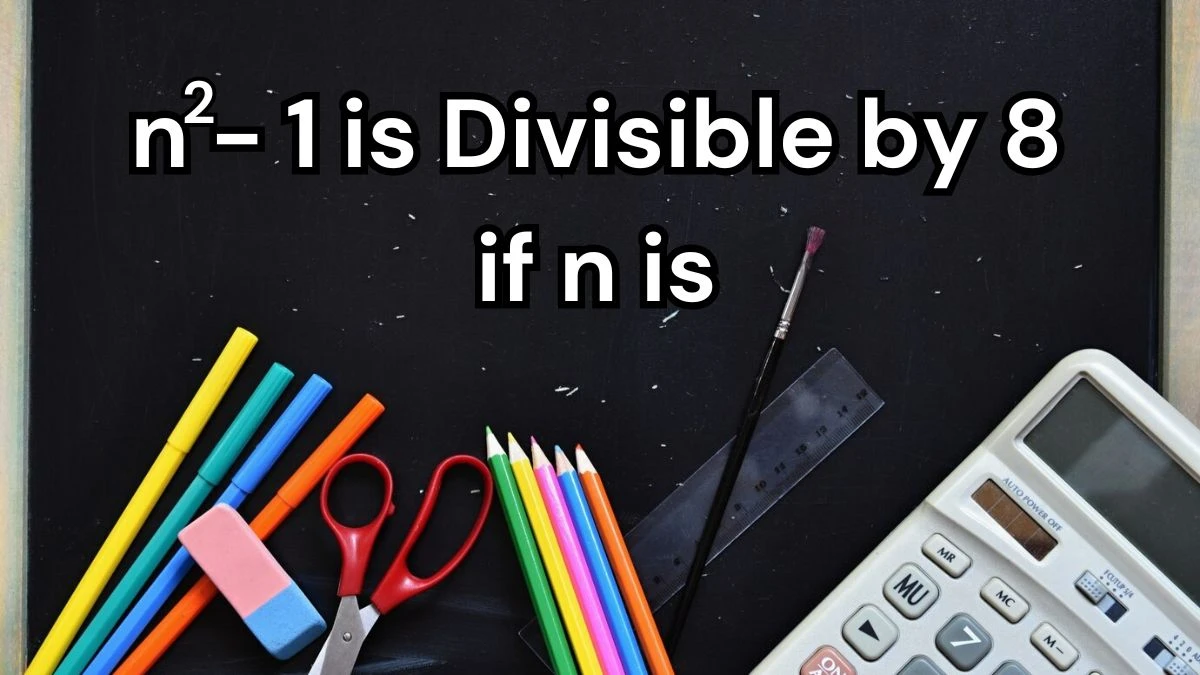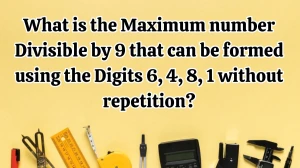n2 - 1 is Divisible by 8 if n is
by
Updated Jul 04, 2024

n2 - 1 is Divisible by 8 if n is
For any odd positive integer n, it can be expressed in the form n = 4p + 1 or n = 4p + 3 where p is an integer.
Any odd positive integer n can be written as the same
We need to determine when n2 - 1 is divisible by 8.
n = 4p + 1
n2 - 1 = (4p + 1)2 - 1 = 16p2 + 8p
n2 - 1 = 8p(2p + 1) which is divisible by 8
n = 4p + 3
n2 - 1 = (4p + 3)2 - 1 = 16p2 + 24p + 9 - 1 = 16p2 + 24p + 8
n2 - 1 = 8(2p2 + 3p + 1) which is also divisible by 8
Hence, n2 - 1 is divisible by 8 if n is an odd positive integer.
Concept of Number Theory
Number theory is a branch of mathematics that deals with the study of integers and their properties. It is one of the oldest and most fundamental areas of mathematics, focusing on the theoretical aspects of numbers rather than their practical applications.
Prime Numbers and Factorization:
Number theory extensively studies prime numbers, which are integers greater than 1 that have no positive divisors other than 1 and themselves. It explores their distribution, properties, and the fundamental theorem of arithmetic, which states that every integer greater than 1 can be uniquely factored into primes.
Divisibility:
Number theory investigates divisibility rules and properties of integers. It explores when one integer divides another without leaving a remainder, leading to concepts like greatest common divisors (GCD) and least common multiples (LCM). These concepts are crucial in various mathematical computations and problem-solving.
Expressions vs. Equations:
Expressions are mathematical phrases that combine numbers, variables, and operations (like addition, subtraction, multiplication, and division). They do not contain equality or inequality signs. Equations, on the other hand, are statements that assert equality between two expressions, often involving variables. Equations are fundamental in mathematics as they allow us to find unknown quantities or verify relationships.
Types of Equations:
Linear Equations are equations where each term is either a constant or the product of a constant and a single variable raised to the first power. They form straight lines when graphed and are widely used in solving basic algebraic problems. Quadratic Equations involve terms where the variable is squared (raised to the power of two). They often represent parabolic curves when graphed and are used to solve problems involving areas, trajectories, and optimization.
Exponential and Logarithmic Equations involve exponential functions (where the variable is in the exponent) or logarithmic functions (where the variable is inside the logarithm). They are used extensively in growth and decay problems, as well as in complex calculations involving rates of change. Trigonometric Equations involve trigonometric functions such as sine, cosine, tangent, etc. These equations are used in geometry, physics, engineering, and other fields to describe periodic phenomena and waveforms.
Applications
Mathematical expressions and equations help in setting up problems by translating real-world situations into mathematical models. This process involves defining variables, establishing relationships, and formulating equations that represent the problem accurately.
Various techniques such as substitution, elimination, factoring, and graphing are used to solve equations and find solutions. These techniques leverage the properties of equations to isolate variables and determine their values. Equations are not only used to find solutions but also to verify the correctness of relationships and analyze scenarios. They provide a framework for logical reasoning and systematic approach to understanding mathematical concepts.




